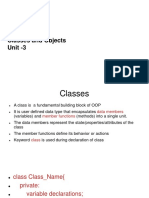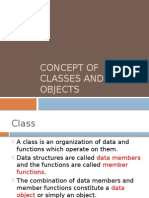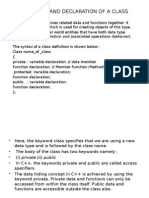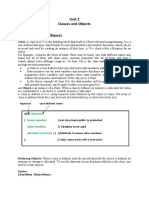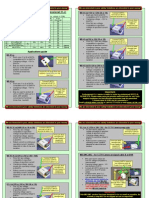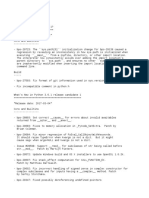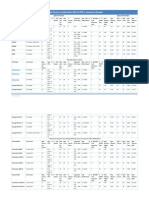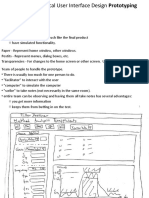0% found this document useful (0 votes)
83 views42 pagesC++ Classes and Objects Overview
The document discusses classes and objects in C++. It explains that structs in C were extended in C++ to become classes which allow data hiding and inheritance. A class groups related data members and member functions together. Class members can be declared as private or public, with private members only accessible within the class. An object is an instance of a class that reserves memory at run time. Memory is allocated for object data members when objects are declared, while member functions are common for all objects.
Uploaded by
darshanCopyright
© © All Rights Reserved
We take content rights seriously. If you suspect this is your content, claim it here.
Available Formats
Download as PPT, PDF, TXT or read online on Scribd
0% found this document useful (0 votes)
83 views42 pagesC++ Classes and Objects Overview
The document discusses classes and objects in C++. It explains that structs in C were extended in C++ to become classes which allow data hiding and inheritance. A class groups related data members and member functions together. Class members can be declared as private or public, with private members only accessible within the class. An object is an instance of a class that reserves memory at run time. Memory is allocated for object data members when objects are declared, while member functions are common for all objects.
Uploaded by
darshanCopyright
© © All Rights Reserved
We take content rights seriously. If you suspect this is your content, claim it here.
Available Formats
Download as PPT, PDF, TXT or read online on Scribd
/ 42









